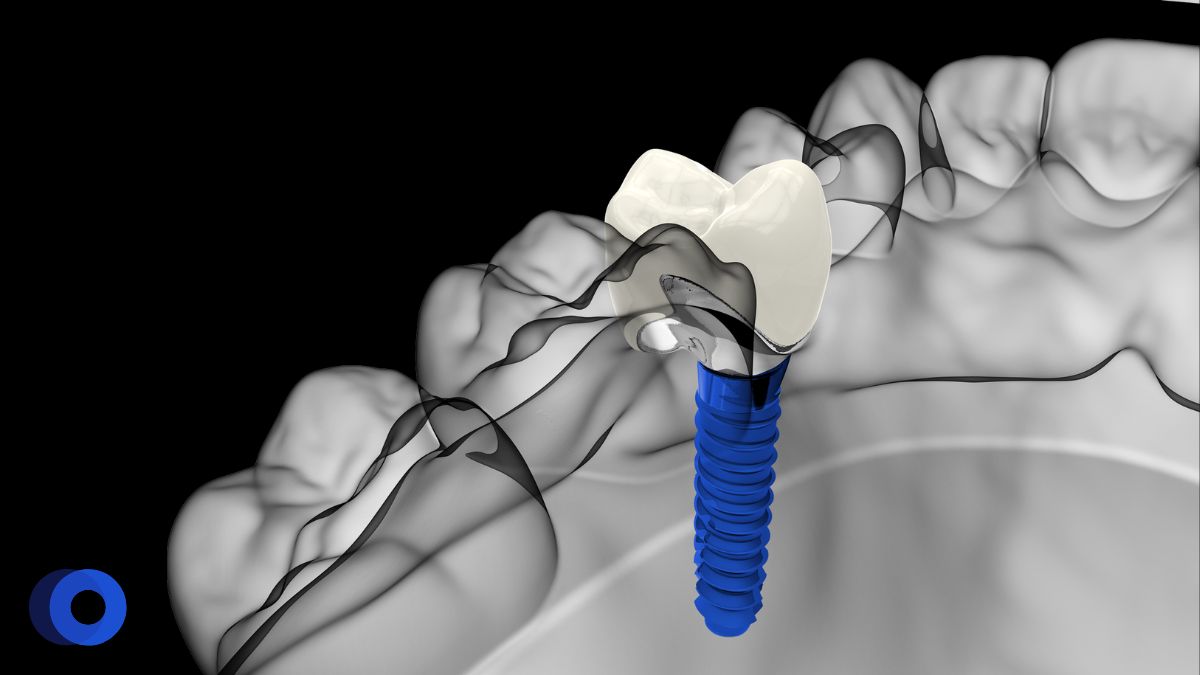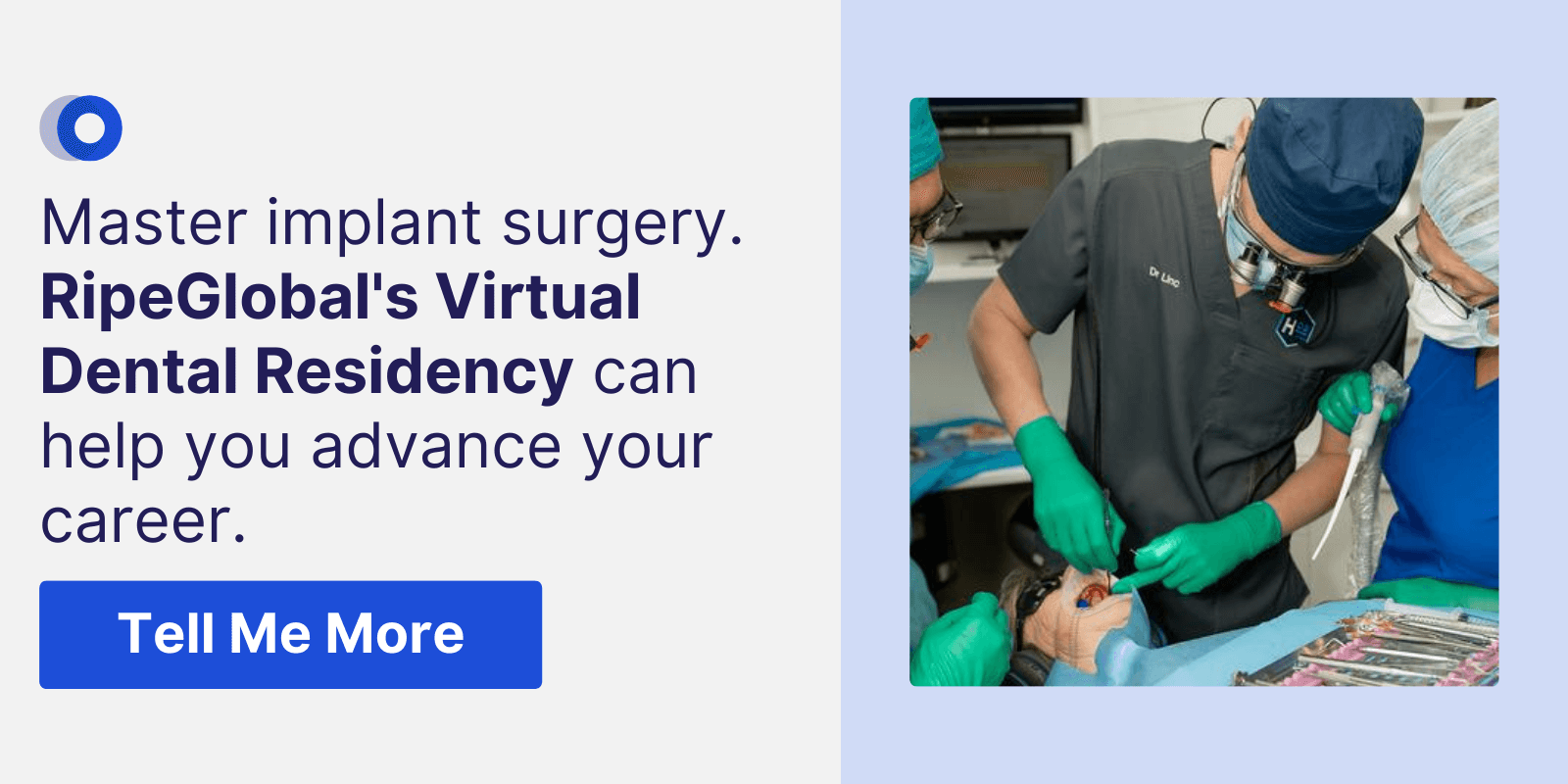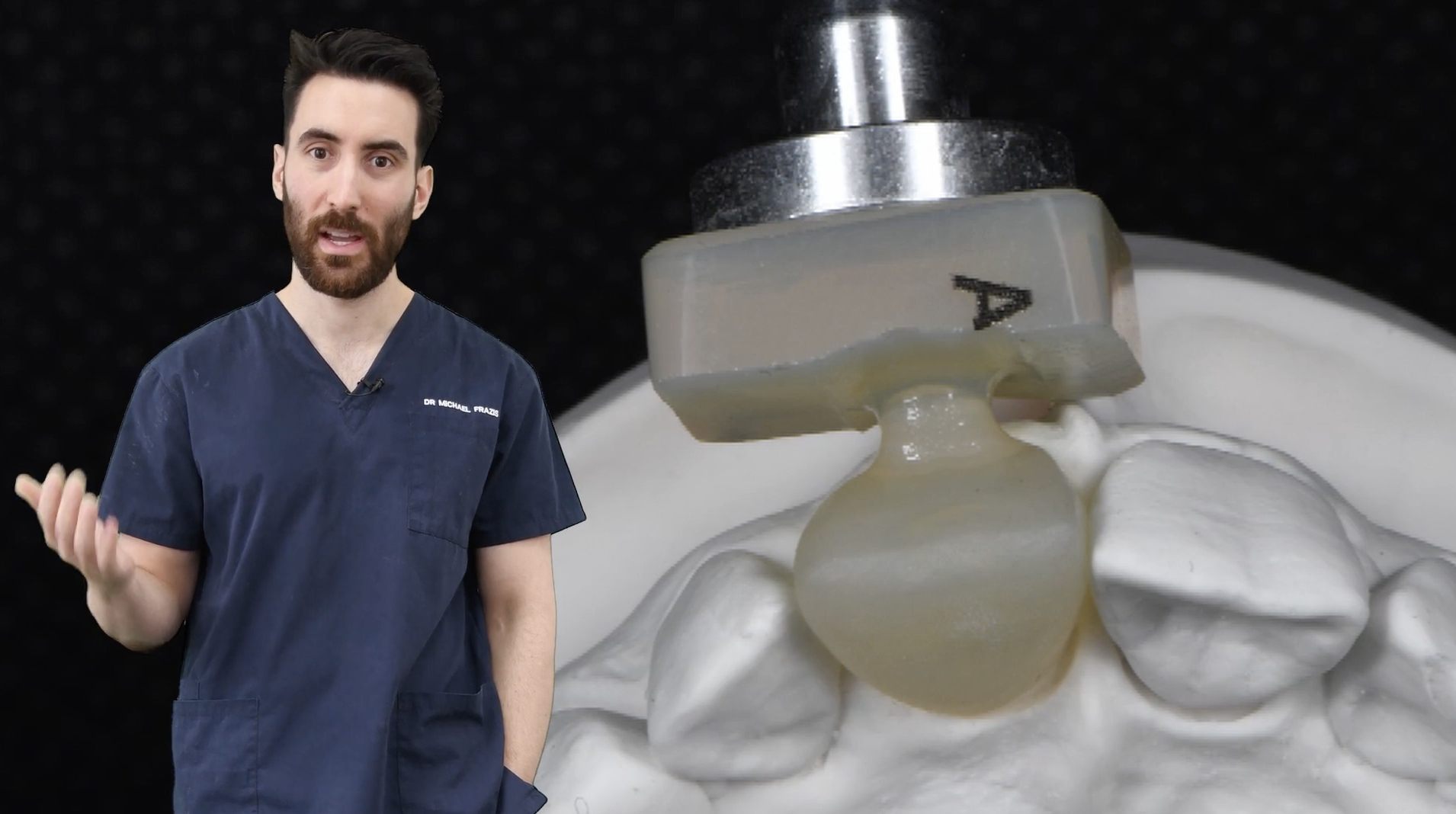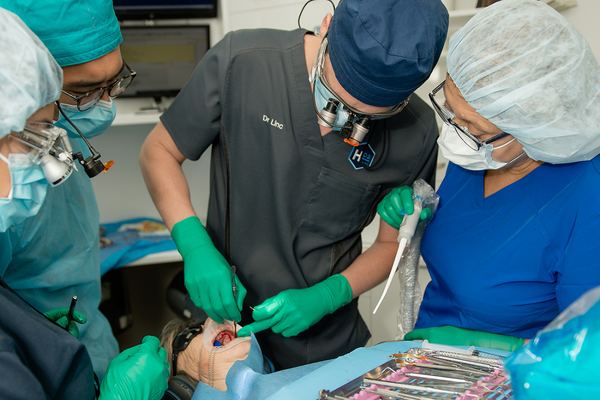Dental implants are surging in popularity as awareness of their benefits becomes known. The success rate of dental implants has become accurate and predictable, and this has motivated patients to consider implants as a permanent and reliable solution to replace their missing teeth. The ease of cleaning, peace of mind, and set-and-forget nature of dental implants lend to their desirability.
We asked RipeGlobal’s Implant Dentistry educator Dr. Dale Rosenbach what are the three most exciting trends in Dental Implant science today.
3 Current Trends In Dental Implant Procedures
1. Immediate Implant Dentistry
Some dentists don’t know that it’s possible to place an implant at the same time as the natural tooth is extracted. So yes it’s not only possible, but where the procedure is indicated, the success rate is equivalent to placing implants in a healed site. Careful patient selection, proper treatment planning, and precise implant placement are necessary to gain predictable and aesthetic results.
The one-stage technique creates a simplified surgical workflow where the patient only needs to endure one surgery instead of two. Among the several long-term studies high cumulative survival rates — such as around 97% to 100% — were reported for immediately loaded implants placed in extraction sites for any indication.
Three benefits of immediate implant dentistry:
- Timeframe: Treatment and recovery times can be cut in half.
- Comfort: A significantly reduced time spent with a gap in the dentition since the aesthetic restorations are made on the day of surgery.
- Patient Satisfaction: Patients prefer immediate implant placement in the anterior maxilla, which helps facilitate high patient satisfaction when clinically indicated.
2. Soft Tissue Grafting
Fifteen years ago a dentist’s ultimate goal focused on implant survival. Today implant science enjoys over a 90% survival rate, and the new big focus is success.
What does success look like? It starts with mastering dental skill sets and techniques. A knowledgeable dentist will look at what recession the patient might have, how nice their papilla is, gingival margin, the success of the soft tissue grafting around the implant, and the uniformity of the mid-facial zenith.
There are several ways that dentists can graft soft tissue to increase keratinized tissue volume and provide coverage on teeth and implants. Techniques can be used in conjunction with implant placement, or after placement for the purpose of salvaging the implant.
Five benefits of soft tissue grafting:
- Comfort: Exposed root conditions can be extremely painful. Soft tissue grafts cover the exposed root to minimize sensitivity and restore gum health.
- Aesthetics: A periodontal disease gum recession can distort the appearance of a beautiful smile. Soft tissue grafting repairs the gum and brings symmetry back to the smile
- Confidence: An aesthetically pleasing smile and improved gum health improves the patient’s confidence.
- Gum protection: Periodontal diseases damage soft tissue. Along with the treatment of deep cleaning, soft tissue grafting reduces tissue and bone deterioration and prevents further exposure to roots.
- Reduction of root decay risk: Exposed dentin is at a higher risk for decay than enamel. Covering the dentin with soft tissue can greatly reduce that risk and help avoid the need for restorative care.
3. Sinus Lifts
Once a complicated procedure, sinus lifts have become easier with greater success and predictable results with the invention of the Densah Burr. But first…
A Quick 101 on Sinus Lifts
Traditionally the posterior maxilla is one of the most difficult areas to successfully place dental implants due to insufficient bone quantity and quality, and its close proximity to the sinus. If the patient has lost bone in the back jaw area due to periodontal disease or tooth loss, placing an implant would be contraindicated for such thin bone.
Sinus lift surgery corrects this problem by raising the sinus floor and adding bone into the cavity where the implant is placed. The sinus lift procedure encourages a successful outcome for placing implants.
Densah Burs: The Implant Game Changer
It’s one of those tools that lays down the history of dental implant science into two epochs: Before Densah Burs and After Densah Burs. Densah Bur technology is based on a biomechanical bone preparation technique called Osseodensification (OD). Unlike traditional dental drilling techniques, OD does not excavate bone tissue.
Instead, bone tissue is simultaneously compacted and auto-grafted in outwardly expanding directions from the osteotomy. When a Densah Bur is rotated at high speed in a reversed, non-cutting direction and with steady external irrigation, a strong and dense layer of bone tissue is formed along the walls and base of the osteotomy. Dense compacted bone tissue produces a stronger purchase for dental implants and facilitates faster healing.
Master Innovative Implantology Procedures With RipeGlobal
Having the knowledge and ability to deliver the latest and best care for your patients is necessary for a successful career. RipeGlobal offers flexible continuing education options for dentists in the form of online CE dental courses taught by master dentists from around the world. To expand your dental career possibilities, learn more about Implantology.





